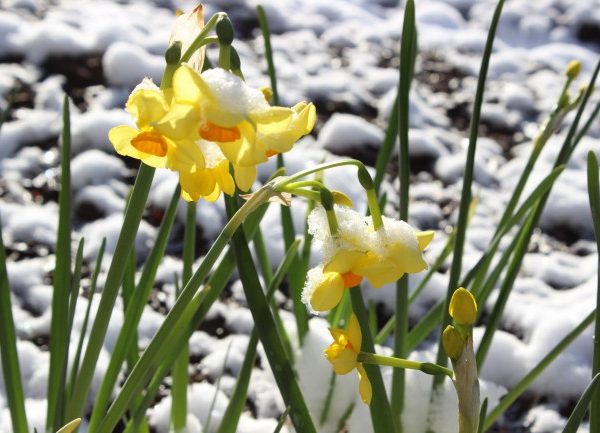After a benevolent first week of April, we have really been brought back to reality as temperatures in Madison have been increasingly chillier since the monthly high of 79 was recorded on April 6.
April 14 was particularly chilly, with the high only getting to 40 under persistent clouds. It could be worse, however. Last Friday it snowed over southern New England — with totals as high as 9 inches in southern New Hampshire and widely greater than 2 inches in the northern suburbs of Boston.
Madisonians are not strangers to April snow, as it has struck us quite substantially in the past two Aprils — on the 12th through 14th last year and on the 10th and 27th in 2019.
Unusual weather is also occurring right now just east of the Philippines, where Typhoon Surigae roared with sustained winds above 140 mph (Category 4) over the weekend. Such early season typhoons (or hurricanes) are not without precedent, but they are unusual. Luckily, the storm center remained offshore and limited the damage. This storm was accurately predicted nearly two weeks in advance — quite remarkable given the unusual nature of a mid-April typhoon.
Unlike the recent snowy weather in southern New England, the morning of April 19, 1775, at Lexington, Massachusetts, dawned clear with a modest west wind, rising pressure and a temperature of 45.7 at 6 a.m., according to professor John Winthrop, who lived in a house on the Lexington Green. Later that morning, the first shots of the American Revolution were fired, and the more substantial Battle of Concord ensued in the afternoon.
Winthrop, in a wonderfully understated entry, noted in his journal that the “Battle of Concord will put a stop to observing.”
Steve Ackerman and Jonathan Martin, professors in the UW-Madison department of atmospheric and oceanic sciences, are guests on WHA radio (970 AM) at 11:45 a.m. the last Monday of each month. Send them your questions at stevea@ssec.wisc.edu or jemarti1@wisc.edu.


